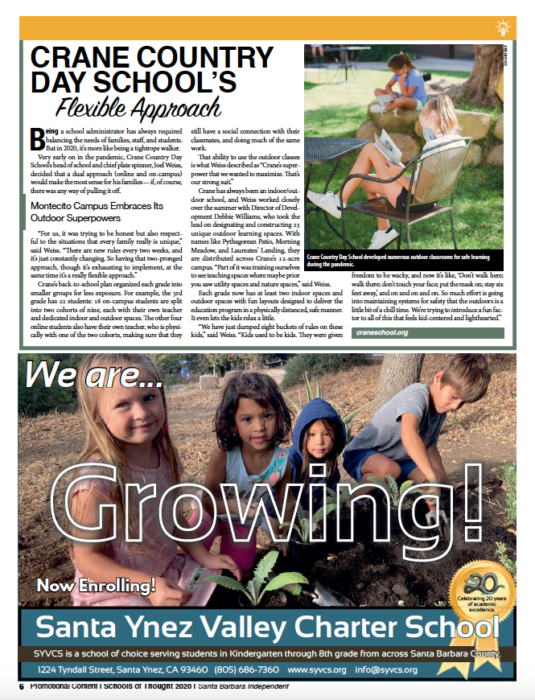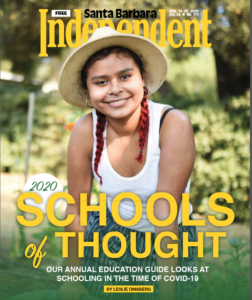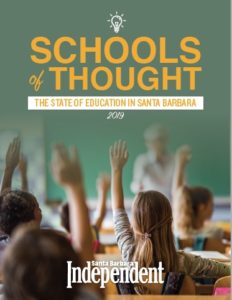
Crane Country Day School’s Flexible Approach, originally published in Santa Barbara Independent on November 19, 2020.
Montecito Campus Embraces Its Outdoor Superpowers
Being a school administrator has always required balancing the needs of families, staff, and students. But in 2020, it’s more like being a tightrope walker. Very early on in the pandemic, Crane Country Day School’s head of school and chief plate spinner, Joel Weiss,
decided that a dual approach (online and on-campus) would make the most sense for his families — if, of course, there was any way of pulling it off.
“For us, it was trying to be honest but also respectful to the situations that every family really is unique,” said Weiss. “There are new rules every two weeks, and it’s just constantly changing. So having that two-pronged approach, though it’s exhausting to implement, at the same time it’s a really flexible approach.”
Crane’s back-to-school plan organized each grade into smaller groups for less exposure. For example, the 3rd grade has 22 students: 18 on-campus students are split into two cohorts of nine, each with their own teacher and dedicated indoor and outdoor spaces. The other four online students also have their own teacher, who is physically with one of the two cohorts, making sure that they still have a social connection with their
classmates, and doing much of the same work.
That ability to use the outdoor classes is what Weiss described as “Crane’s superpower
that we wanted to maximize. That’s our strong suit.” Crane has always been an indoor/outdoor school, and Weiss worked closely over the summer with Director of Development Debbie Williams, who took the lead on designating and constructing 23
unique outdoor learning spaces. With names like Pythagorean Patio, Morning Meadow, and Laureates’ Landing, they are distributed across Crane’s 12-acre campus.
“Part of it was training ourselves to see teaching spaces where maybe prior you saw utility spaces and nature spaces,” said Weiss. Each grade now has at least two indoor spaces and outdoor spaces with fun layouts designed to deliver the education program in a physically distanced, safe manner. It even lets the kids relax a little.
“We have just dumped eight buckets of rules on these kids,” said Weiss. “Kids used to be kids. They were given freedom to be wacky, and now it’s like, ‘Don’t walk here; walk there; don’t touch your face; put the mask on; stay six feet away,’ and on and on and on. So much effort is going into maintaining systems for safety that the outdoors is a little bit of a chill time. We’re trying to introduce a fun factor to all of this that feels kid-centered and lighthearted.”
Originally published in the Santa Barbara Independent on November 19, 2020. To read the section as it appeared in print, please click here.



 Click
Click